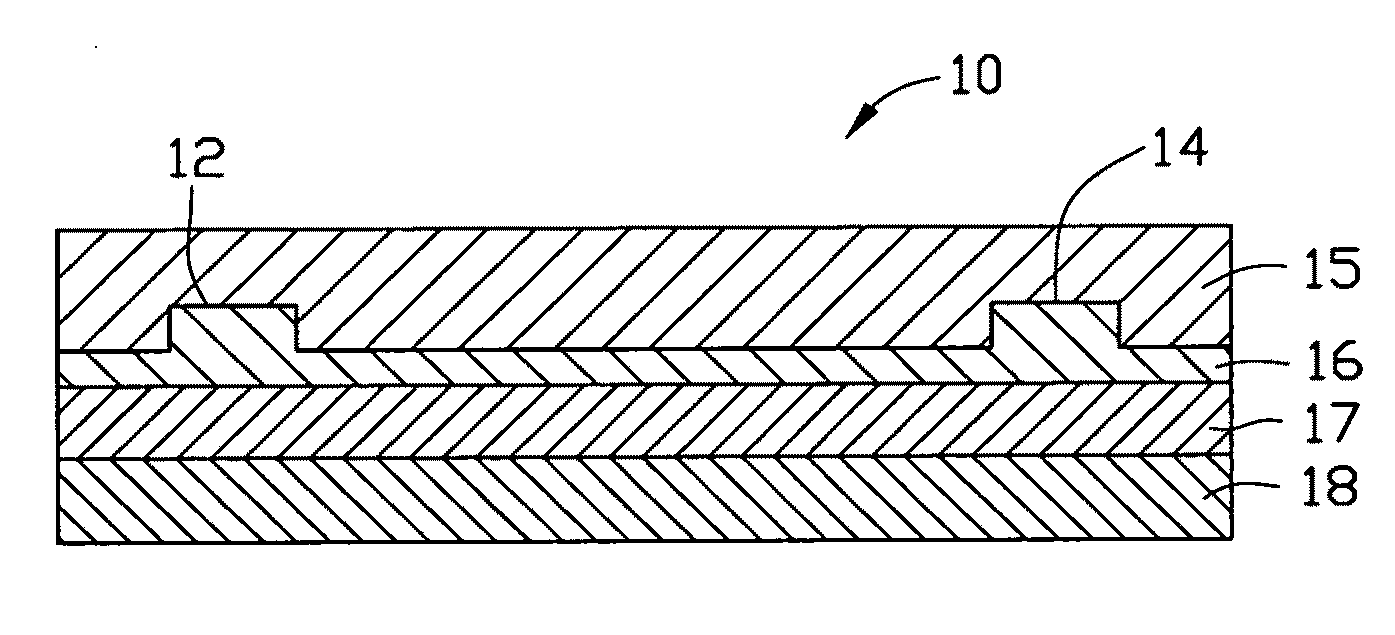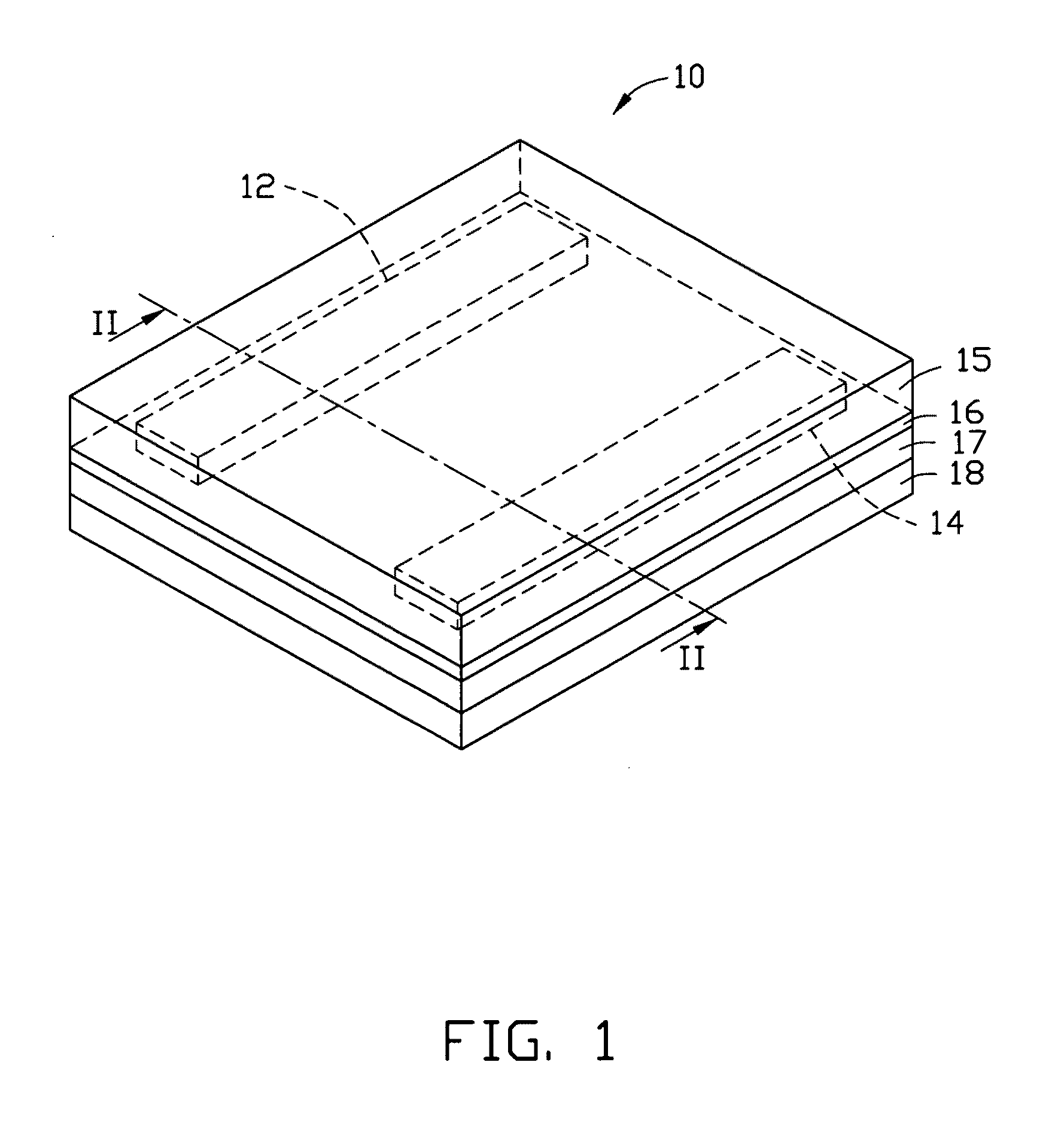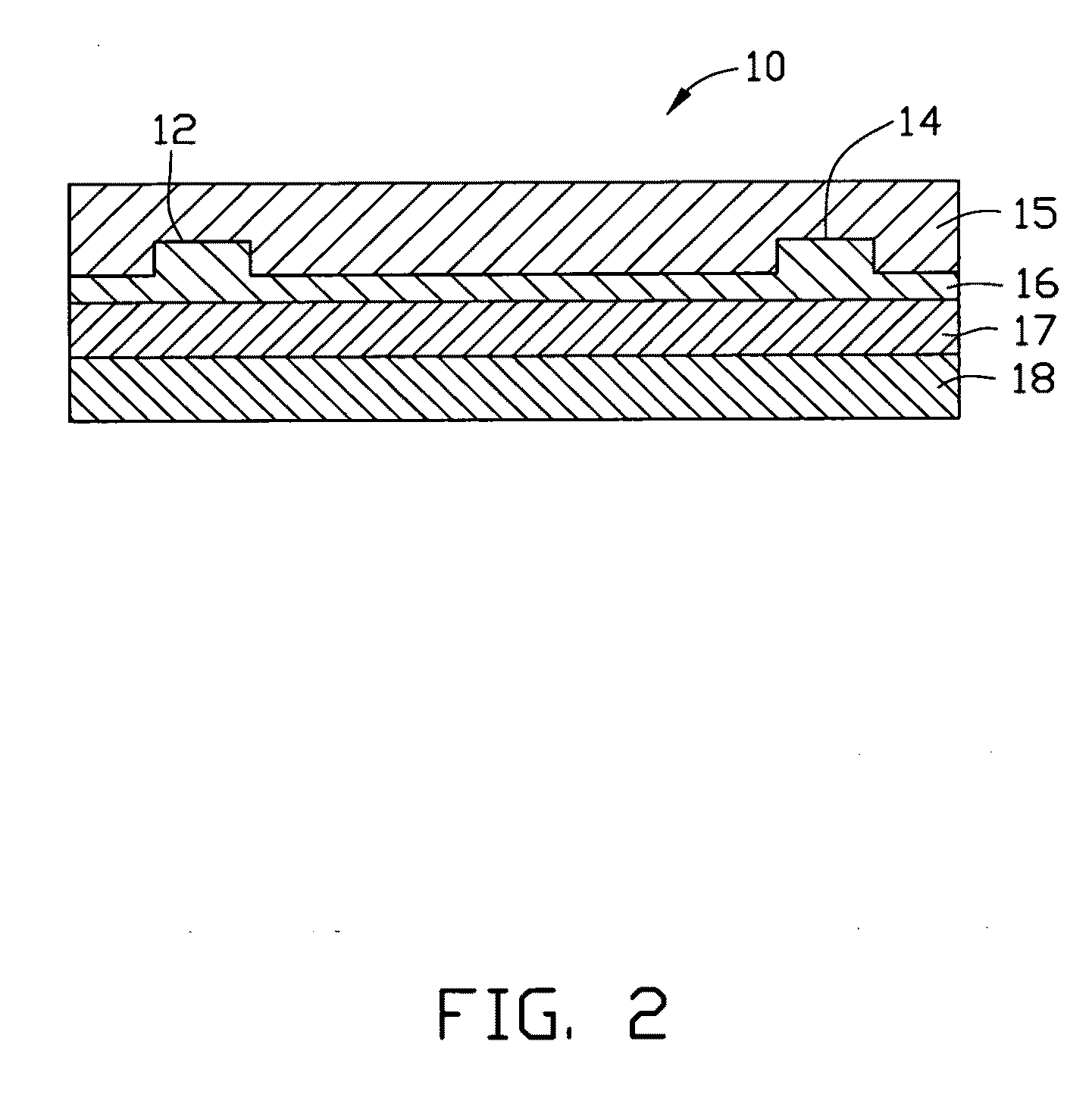Carbon nanotube heater
a carbon nanotube and heater technology, applied in ohmic-resistance heating, ohmic-resistance heating details, electrical equipment, etc., can solve the problems of metals being easily oxidized, heater elements having short life, and limiting the application of such a heater
- Summary
- Abstract
- Description
- Claims
- Application Information
AI Technical Summary
Benefits of technology
Problems solved by technology
Method used
Image
Examples
Embodiment Construction
[0029]Reference will now be made to the drawings, in detail, to describe embodiments of the heater.
[0030]Referring to FIGS. 1 and 2, the planar heater 10 according to an embodiment is shown. The planar heater 10 includes a planar supporter 18, a heat-reflecting layer 17, a heating element 16, a first electrode 12, a second electrode 14, and a protecting layer 15. The heat-reflecting layer 17 is disposed on a surface of the planar supporter 18. The heating element 16 is disposed on a surface of the heat-reflecting layer 17. The first electrode 12 and the second electrode 14 are electrically connected to the heating element 16. In one embodiment, the first electrode 12 and the second electrode 14 are located on the heating element 16.
[0031]The planar supporter 18 is configured for supporting the heating element 16 and the heat-reflecting layer 17. The planar supporter 18 is made of flexible materials or rigid materials. The flexible materials may be plastics, resins or fibers. The rig...
PUM
| Property | Measurement | Unit |
|---|---|---|
| angle | aaaaa | aaaaa |
| thickness | aaaaa | aaaaa |
| thick | aaaaa | aaaaa |
Abstract
Description
Claims
Application Information
 Login to View More
Login to View More - R&D
- Intellectual Property
- Life Sciences
- Materials
- Tech Scout
- Unparalleled Data Quality
- Higher Quality Content
- 60% Fewer Hallucinations
Browse by: Latest US Patents, China's latest patents, Technical Efficacy Thesaurus, Application Domain, Technology Topic, Popular Technical Reports.
© 2025 PatSnap. All rights reserved.Legal|Privacy policy|Modern Slavery Act Transparency Statement|Sitemap|About US| Contact US: help@patsnap.com



